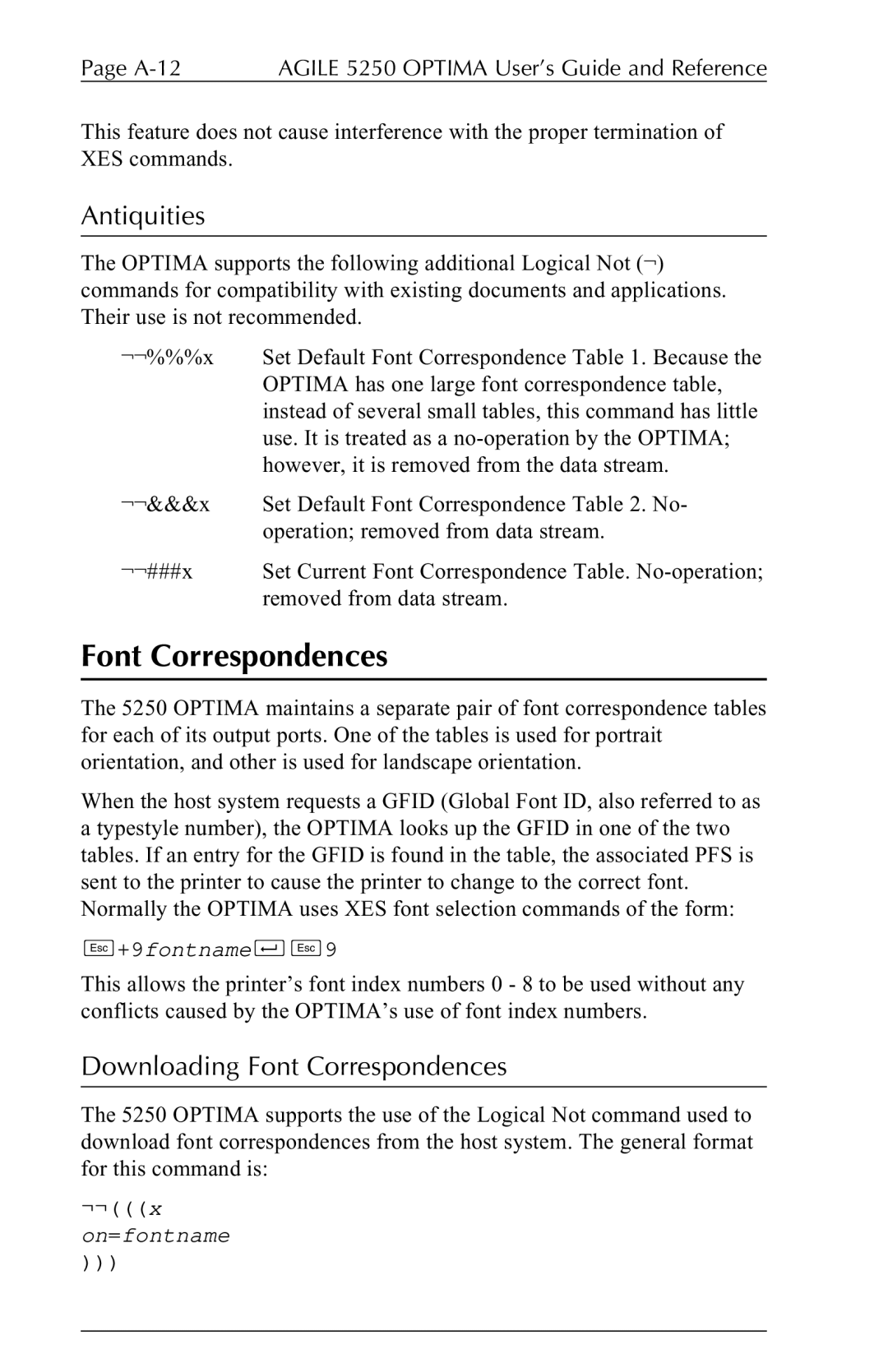
Page | AGILE 5250 OPTIMA User’s Guide and Reference |
This feature does not cause interference with the proper termination of XES commands.
Antiquities
The OPTIMA supports the following additional Logical Not (¬) commands for compatibility with existing documents and applications. Their use is not recommended.
¬¬%%%x | Set Default Font Correspondence Table 1. Because the |
| OPTIMA has one large font correspondence table, |
| instead of several small tables, this command has little |
| use. It is treated as a |
| however, it is removed from the data stream. |
¬¬&&&x | Set Default Font Correspondence Table 2. No- |
| operation; removed from data stream. |
¬¬###x | Set Current Font Correspondence Table. |
| removed from data stream. |
Font Correspondences
The 5250 OPTIMA maintains a separate pair of font correspondence tables for each of its output ports. One of the tables is used for portrait orientation, and other is used for landscape orientation.
When the host system requests a GFID (Global Font ID, also referred to as a typestyle number), the OPTIMA looks up the GFID in one of the two tables. If an entry for the GFID is found in the table, the associated PFS is sent to the printer to cause the printer to change to the correct font. Normally the OPTIMA uses XES font selection commands of the form:
s+9fontnameds9
This allows the printer’s font index numbers 0 - 8 to be used without any conflicts caused by the OPTIMA’s use of font index numbers.
Downloading Font Correspondences
The 5250 OPTIMA supports the use of the Logical Not command used to download font correspondences from the host system. The general format for this command is:
¬¬(((x
on=fontname
)))
